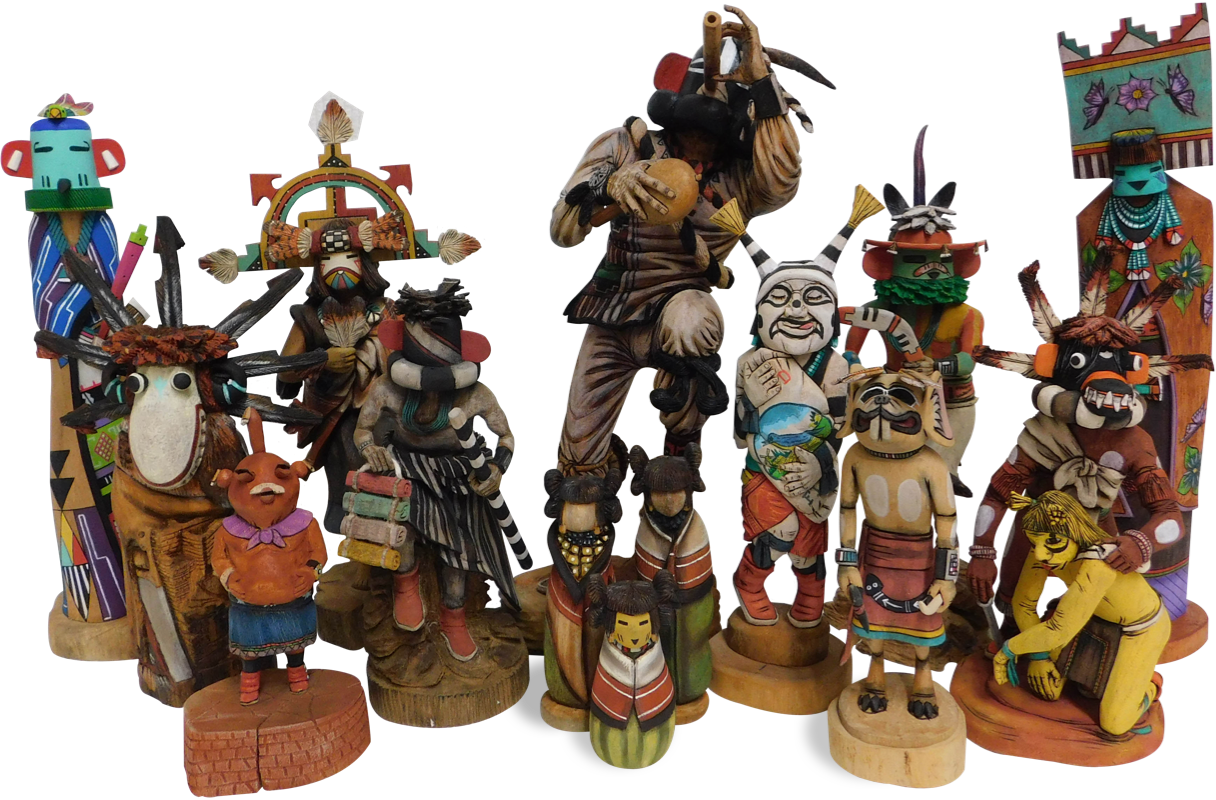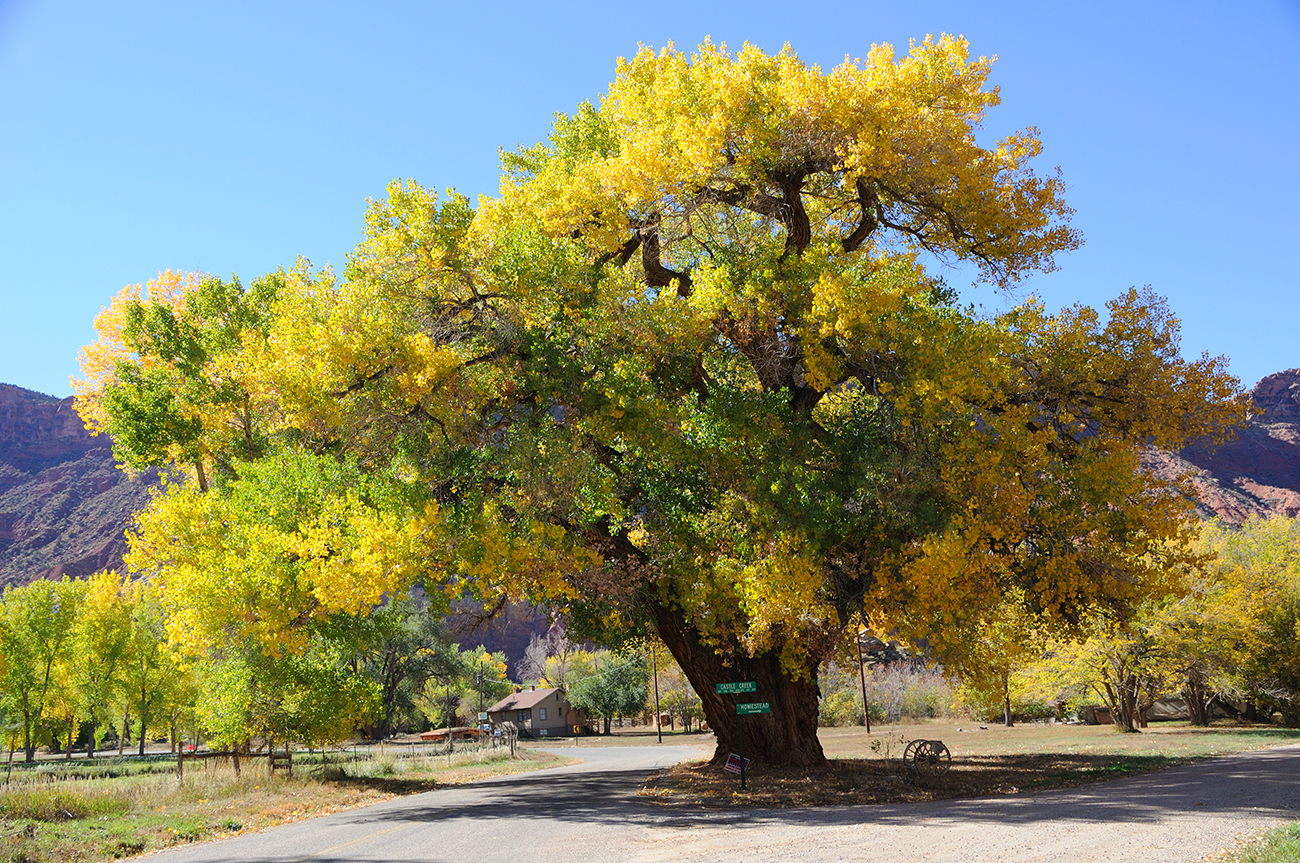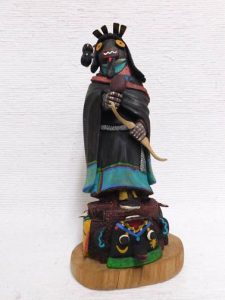
The Hopi are a peaceful farming tribe who live in northeastern Arizona. On their 1.5 million-acre reservation that includes 12 villages and is home to more than nine thousand members of the tribe. People from outside the tribe use the word Kachina to describe the spirits that are central to the Hopi religion. The term is also used to describe the dolls that represent these important spiritual beings. Hopi use the word Katsina to describe the spiritual beings of the Hopi and the dolls that they carve.
In 1857, traders received the first Hopi Katsina dolls possessed by people outside the Hopi tribe. Until the end of the 19th century, Katsina dolls were gradually acquired by others. Katsina dolls have a simple style with more detailed masks. The dolls hold objects that are important to their individual roles.
How are Katsina dolls made?
Today, authentic Katsina dolls are made by Hopi carvers who apply both artistry and tradition to their craft. While people might refer to them as dolls, they are representative of spiritual beings and others from the Hopi tradition. Traditionally, the carvers make Katsinam from cottonwood tree root. Cottonwood trees used to grow abundantly near and on Hopi lands. In the Hopi language, the word for cottonwood root means ‘water wood’.
Hopi carvers use tools that have been specially adapted for the removal of the bark and smoothing the wood. Carvers might use mallets, hand saws, hammers, knives, rasps, and chisels to create the dolls.
In the past, carvers made dolls from a single piece of cottonwood root. Those that had large headpieces (tablitas) were carved separately before being attached. Carvers today may carve the torso, legs, arms, headpiece, and head separately before joining them together. While Katsina dolls that are carved separately and then attached might be more elaborate, dolls that are carved out of single pieces of wood are favored by some collectors.
After carving
Once a Katsina doll has been carved, native kaolin clay is used to whitewash it. Next, the carver will paint the doll with mineral dyes, vegetable dyes, tempura, watercolors, or acrylics. Historically, yucca brushes were used to apply the paint. Now, artisans use many types of brushes to paint the details of the Kachina dolls.
The last step is to add other items to the dolls. The carvers may add a ruff around the neck out of yarn, plastic, or green bough. The artisans carefully make objects to place in the dolls’ hands, including bows, knives, rattles, and other items. Jewelry might be added.
Some carvers add earrings, necklaces, bracelets, and bow guards. Clothing might be painted or carved onto the wood or include cloth with decorations. Commercial or native fur may be added to the neck ruffs, and feathers may be added to the headpieces of some Katsinam.
The most defining part is the mask. The mask identifies the persona of the Katsina. The details of the Katsina represent Hopi customs, myths, and legends. Katinsa dolls with a single whorl on one side of the head alone represents a warrior maiden while those with whorls on each side of the head represents young girls who are prepared for marriage.
The anatomy of modern Katsina dolls is generally presented well to show both form and musculature. This helps to present a greater degree of realism. Some pieces are called action dolls because their bodies are carved in forms of motion as in a dance.
The objects that are held in the Katsinam hands represent what the being does or who the doll represents. Whipper Katsinam carry yucca whips that are used to strike young initiates during ceremonies. Guard kachinas may also hold whips to keep the crowds back.
While Katsinam may be given to Hopi children, they are not meant to be played with as toys. Hopi girls receive two Katsinam each year from ages one to 10, the first one they receive is the Grandmother Katsina. The dolls represent benevolent deities that live with the Hopi people for six months each year. In February, the spiritual deities arrive on the Hopi mesas and later return to their homes in the San Francisco peaks in Flagstaff, Arizona in July of each year. Katsinam are integral parts of Hopi spirituality and are considered to be spiritual messengers of rain and blessings.
Learn more with Kachina House
Kachina House offers a broad variety of authentic Hopi kachina dolls. To learn more about these handmade art pieces, contact Kachina House today at 800.304.3290.




I am looking for a list of Hopi Carver Hallmarks to identify the makers of some tihus(dolls) I own. Do you know if such a list exists as it does for the Hopi Silversmiths?
There is no listing of their signatures. If you send pix to our email we might be able to help. info@kachinahouse.com
Can you buy the Hopi Kachina carrying child , 24 inches anywhere??
Sorry, Carol; we don’t know of a Hopi carrying child except for the Ogre Woman who sometimes has a child in a basket on her back. Can you be more specific?
I have a kachina I bought in college (circa 1974) that I have never seen again. My research at the time told me this was Sotuganagu, a major spiritual kachina. The doll has red “ears” a white face, horizontal rectangular eyes, an inverted triangular nose, an hourglass type graphic on each cheek, and dots above the eyes. There is a conical hat, painted half turquoise and half gold (or yellow), with a black and white checked stripe dividing the two halves. There is a bull-roarer in the right hand. I think there was something in the left hand, but it’s gone now. Can you maybe confirm the name of the kachina, it’s place in the kachina world, and if I have the spelling correct? Thank you so much!
You have a planet Katsina….a Sotuknang. You can see one here
https://www.kachinahouse.com/native-american-hopi-carved-planet-fearsome-katsina-sculpture-1952
Planet or Star Katsina (Sotoknang or Sotuknangu) controls the movement of the stars and planets. He is a fearsome Katsina who can strike people with lightning, scattering them about in pieces. He then puts them back together, but when he does, they are put together all wrong.